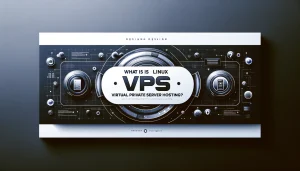Reading Time: 10 minutes One of the nicest things you can say about a coworker is that they work well with others and that they’ve got the right amount of flexibility to them and a willingness to adapt. A web hosting OS is never going to be an animate being, but if Linux was a person you can bet there would be others giving these same accolades to it. The one thing anyone who is an expert in web hosting will tell you is that Linux is the most flexible and readily adaptable OS for web hosting.
One of the nicest things you can say about a coworker is that they work well with others and that they’ve got the right amount of flexibility to them and a willingness to adapt. A web hosting OS is never going to be an animate being, but if Linux was a person you can bet there would be others giving these same accolades to it. The one thing anyone who is an expert in web hosting will tell you is that Linux is the most flexible and readily adaptable OS for web hosting.
There’s no other one that is so accommodating of such a wide array of website types. Indeed, the benefits of Linux VPS hosting stretch far and wide and that’s exactly why the majority of good Canadian web hosting providers are going to have Linux-based servers laying the foundation for websites that need their spot on the web and want to be on the most solid of footing with that. It also tends to be less expensive, and this is why there’s even more affordability in the equation when we talk about affordable Linux VPS hosting Edmonton.
Or anywhere else in Canada for that matter, because it’s not just folks in the Northernmost big city in Canada who need to be mindful of budget constraints when operating their business. Reliable web hosting is a must, but where can it be had for the absolute best price. For Linux VPS hosting we are very comfortable saying that it will be right here with 4GoodHosting, and this will be the same truth for any city of any size in Canada.
From there the next thing to say is that not all sites are the same, and some will have features or components that mean they need more in the way of resources. You might want to think of that as ‘elbow room’ for sites that need it, but this is exactly why VPS hosting is better when a site needs that space. There are options with that, but as always we think having a Linux OS for it is the way to go.
So what we’ll do here for this week’s entry is to go deeper into what is Linux VPS hosting, and what makes it the best choice the vast majority of the time a site is needing more than what can be offered with a shared hosting plan.
Ideal Versatility / Reliability
Market share is often a pretty good indicator or product quality resulting in implementation, and Ubuntu (a Linux distribution) has an impressive share of over 32% of the market in server operating systems. The Linux OS is prized as a web server platform for its ability to deploy a wide range of applications, and particularly with web hosting control panels like cPanel, Plesk, and Spanel. And of course the option for anyone who doesn’t have the skills or inclination to control is to go with Managed VPS web hosting in Canada.
This will apply for affordable Linux VPS hosting in Edmonton too, although we don’t have anything here to suggest that Managed web hosting is more popular in Alberta than elsewhere in Canada. But like anyone and everyone else we’re seeing how Linux VPS hosting plans are among the hottest services in the online world right now.
The way VPS offers an isolated environment and dedicated resources allocated for your site’s needs alone are going to the be the biggest reason for that, and it may also be a reflection of how certain businesses have chosen to go with larger and / or more dynamic websites simply based on the increasingly pivotal role their site plays in the visibility of their website.
And while they might not come to a web hosting provider in Canada asking for Linux VPS hosting by name, they’re asking for it in a roundabout way when they say they need a supremely reliable hosting service that’s reasonably priced and also has more in the way of site-ready optimization available for theirs.
With VPS solutions there may be a few clients sharing the same physical machine, but their accounts are still completely independent and safe from neighboring breaches. This is just the start of one of the many benefits of Linux VPS hosting that we’re going to touch on here, and the next part of what is VPS hosting that is hugely advantageous is that way you can scale your server resources. When you start to come up near limits for CPU, RAM, or disk space you can easily add more of what you need when you have Linux OS web hosting.
This valuable feature means you can steadily accommodate your business growth without having to constantly make arrangements to upgrade to a better web hosting plan.
Impressive Compatibility
Another huge plus is there is that there is simply no better operating system for your virtual private server runs on. Let’s consider how some of the applications and software solutions require are developed to run in a specific environment, like how .NET apps and MS products will only work properly with a Windows-based server.
The reason that Canadian VPS hosting providers will nearly always opt for Linux OS servers for affordable Linux VPS hosting in Edmonton or elsewhere is because of its flexibility and affordability. The way a Linux VPS will support WordPress, Joomla, Magento, and thousands of other web-building apps without even so much as a single hiccup is a big part of what distances it from other web hosting OS systems.
Optimal Fits
We can choose to launch from pretty much anywhere when it comes to use cases where a Linux VPS platform enables you to do so much more with online project and get more from it too. One of the best examples for people in Canada who have ecommerce websites hosted on a Linux OS is the way the service means they get superior performance boosts, customization control, and enhanced security. And they receive them to an extent that no other OS choice is going to come even close to matching.
Page load speeds are also always going to be a forefront performance metric for web hosting too. Make it another vote for Linux VPS hosting, because virtual server platforms excel when it comes to handling high-traffic websites where growing amount of RAM and CPU will be required and load speeds will suffer if they’re not available. The next mention in favour of it is going to be for configurability, although from this point we stray from the performance benefits of Linux VPS hosting.
Better configurability certainly is part of the equation too for why VPS hosting is better, and Linux VPS hosting is best. This extend to web apps, gaming projects, mail servers, backups, VOIP services and reseller businesses are all made better when you’re working in a Linux OS environment.
It is true that deep server customizations will require more in the way of knowledge and previous experience. If this is your first time, make sure to work with a knowledgeable developer or go for a managed VPS plan to get more support from the host.
Linux Hosting with cPanel
We mentioned the use of cPanel briefly earlier here, but having such a superior website control panel available to customers is a big part of the benefits of Linux VPS hosting here. As an OS, Linux is only responsible for the communication between applications and various resources on the web server. Web hosting presents more needs, and this is where the benefits of a smartly-designed control panel come into play.
cPanel has always been one of the most popular web hosting control panel applications, and that has in large part been based on its functionality and the ability to run on Linux. Where Linux handles resource allocation, cPanel sets users up with a handy interface to manage their web hosting accounts.
Through it you can be performing various tasks such as setting up and configuring email, managing databases and files, performing backups, and more. The only drawback is one that we will need to mention here though. It’s the fact that cPanel has been increasing licensing fees over the past year and this is increasingly the cause of user dissatisfaction.
Linux Hosting with SPanel
So there is an alternative, however, and it’s going to be something else worth weighing if you do intend to be proactive with your site and you’re in the market for affordable Linux VPS hosting Edmonton or elsewhere in Canada. There are the right similarities to cPanel, and SPanel helps users manage their web hosting accounts too along with similar capabilities to cPanel. And, in some cases, maybe even superior ones for certain aims.
With Spanel users can manipulate all facets of their accounts, including managing their websites, webmail, and more. It may be available based on what your Canadian web hosting provider is offering with managed VPS plans, and the ease with which cPanel accounts can be ported can be a very persuasive point for a lot of customers.
Plus with SPanel you won’t subject to arbitrary price increases in licensing like many competitors, and you’ll also like to have free site migration too if necessary. SPanel supports various web servers, including Apache, LiteSpeed, and Nginx. The appeal of better server performance, inclusive services, and less restrictions because of licensing goes a long way in pushing the appeal of Spanel in comparison to cPanel.
Choose from Popular Linux Versions
Modular design concept means Linux is an OS that may be fine-tuned for specific uses, and this has resulted in the rise of various Linux versions or distributions. Over 600 of them are known to exist at this point, and each has its own degree of popularity for member of the user community. Several Linux versions have gained popularity for use in web and physical servers over the years – CentOS, Debian, Ubuntu, and OpenSUSE.
CentOS
CentOS gets top marks for exceptional stability and high compatibility with installation packages. It is one of the popular versions of Linux that is run for web servers and server maintenance requirements are always minimal because relatively slow version updates. Other pros include extensive compatibility with various packages, extreme stability, low maintenance requirements, and strong community support.
On the flip side of that the aspect of CentOS that isn’t as great is the way it is known for slow adaptation to new applications
Debian
Among the entirety of the Linux distribution range, Debian is known as a good CentOS alternative because it is exceptionally easy to install and configure, making it perfect for Virtual Private Server (VPS) deployment.
Pros for this one are that it is remotely maintainable and that is has easy system integration and reconfigured packages. Cons are that is not always working with most up-to-date Linux OS version, and it’s been said to have poor enterprise-level support too.
Ubuntu
Ubuntu is probably the best-known desktop version of Linux, and it’s well-regarded in webmaster circles for many reasons because of how it works so well in virtual server environments. It’s ongoing popularity also means it is easy to get support and many users will also like the familiarity they have with how it behaves.
Pros for Ubuntu is that it is easily kept up to date and there is high package availability. If anything is going to take away from Ubuntu’s appeal it will be that is struggles with Windows product compatibility, but most people with sites incorporating them will probably be using Windows web hosting. We’re looking at the best Linux VPS hosting here.
OpenSUSE
OpenSUSE is not the same as the enterprise version of SUSE Linux. It was designed to be useful for server administrators. This provides a technical explanation as to what it will do well as a web server platform. But compared to others like CentOS and Debian it lacks the strong community backing that is big promo point for Linux VPS hosting users.
Pros for OpenSUSE are easy installation and administration, easy package deployment, and support for RPM packages. Cons are limited community support and releases that have short life cycles,
Choosing Your Linux Version
Your choice of a Linux distribution for your web server should start with an understanding that its utility as desktop and server platforms are very different. Some Linux versions may perform well as desktop operating systems while being entirely unsuitable for server environments at the same time.
Your safest choice is almost always going to be going with CentOS. Availability is nearly guaranteed as it is highly popular and it also has the reliability and stability users want, along with good security infrastructure incorporated into it. It’s at heart an enterprise-class OS anyway, so it will be good as a base for web server duties.
Debian gets the runner-up nod here and that’s because it is easily the most stable version and stability is everything when it comes to VPS deployment. If you’re going to be running a website that needs to be deployed on a VPS, chances are that you want it to be as reliable as it can be.
Best Linux VPS for your Business
Deciding on your operating system for affordable Linux VPS hosting Edmonton or another city will being with accurately identifying your project’s specific needs while taking other critical aspects into consideration too. Most offerings will make their feature set readily only display for webmaster or other decision makers when it comes to web hosting plans.
It’s really not possible to have too many features included in the VPS hosting deal. Even if you don’t see any immediate need of a certain feat, there is a good chance it might come in handy as your project progresses and needs grow. Compare different packages to determine which one is more cost-effective.
Ease of use will be important for a lot of first-time users and that’s because they’ll like to feel comfortable with the environment and server operation as soon as possible. Look for providers that give you a comprehensive enough interface and plenty of pointers how to find the most essential options. And if there’s a free trial to test the VPS before you purchase it then that’s something you should definitely take them up on.
Security will always be a top priority too, and for obvious reasons. This is even more true if you will be hosting a mission-critical website that records user data in ways too. Ensure your future VPS hosting company has enough security measures in place to handle different types of web attacks.
Customer support including technical support is often provided to existing clients through internal ticketing, but if you have a providers who also has live chat, phone, or other channels then it’s a sign that their customer support is likely better. The level of knowledge you can ascertain in them sales team can give you a good idea of the level of support too.
Brand reputation may also be a part of your decision-making process, ad companies with extensive experience and the testimonials of many satisfied clients are always a good bet for reliable Linux VPS hosting. TrustPilot and other websites like it are available to get a better idea of how reputable the Linux OS web hosting provider may be. Beware of affiliate reviews that exist only to provide site owner’s with a commission.
Conclusion
As an overall takeaway here, when it comes to VPS the flexibility you get with the choice of an OS is probably always going to the primary consideration and the one you come back to repeatedly as you get closer to making your decision regarding web hosting. To some extent this is separated into Linux and Windows camps, and while Windows does have specific exclusive benefits too they just have the same far reach when it comes to site compatibility.
 Before the Internet it was often a lot more challenging to find a means of voicing what you had to say. Even though everything a blogger writes will be ‘voiced’ digitally, the ability to publish with WordPress or whatever other means they use is something that has been incredibly valuable in the world of communication. Oftentimes it’s much more unique and interpersonal and better suited for connecting people and expanding on their interests. A lot of new bloggers will be looking for an affordable web hosting platform in Canada.
Before the Internet it was often a lot more challenging to find a means of voicing what you had to say. Even though everything a blogger writes will be ‘voiced’ digitally, the ability to publish with WordPress or whatever other means they use is something that has been incredibly valuable in the world of communication. Oftentimes it’s much more unique and interpersonal and better suited for connecting people and expanding on their interests. A lot of new bloggers will be looking for an affordable web hosting platform in Canada.










